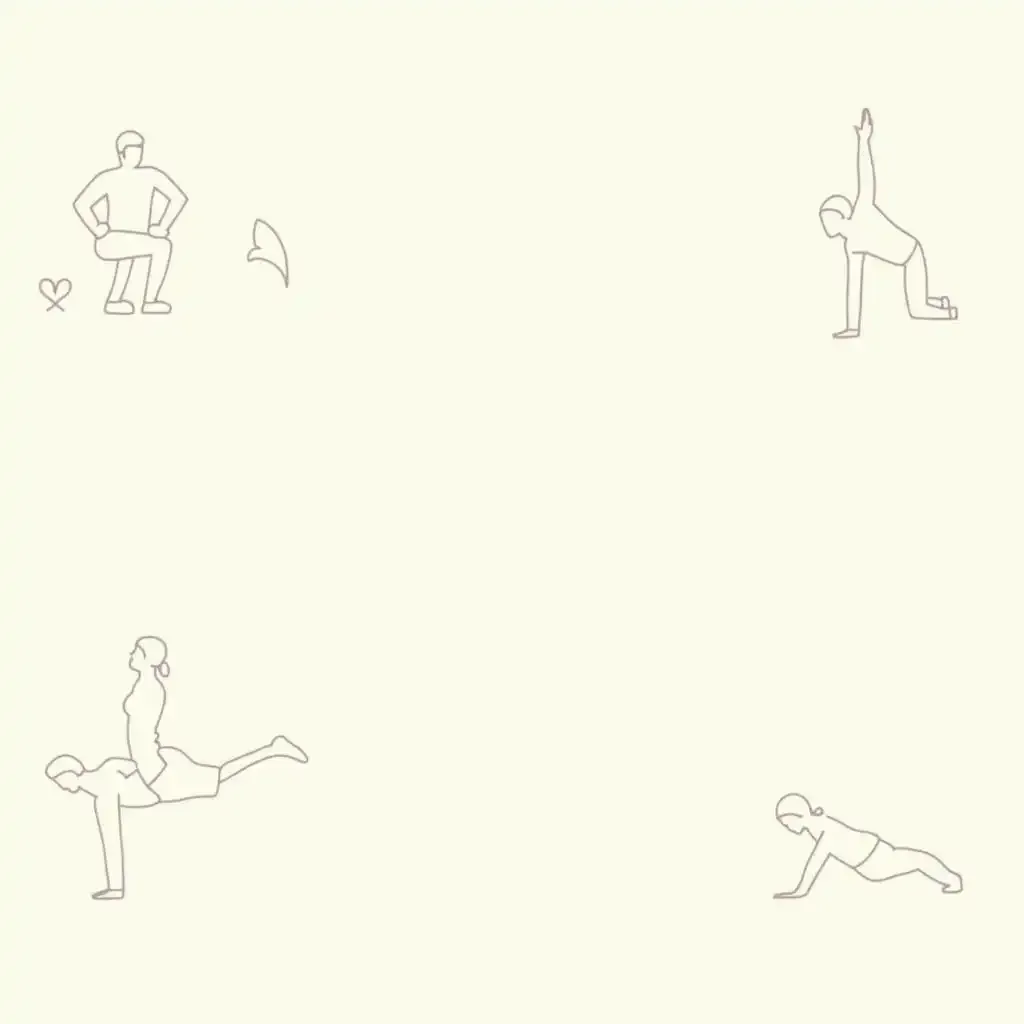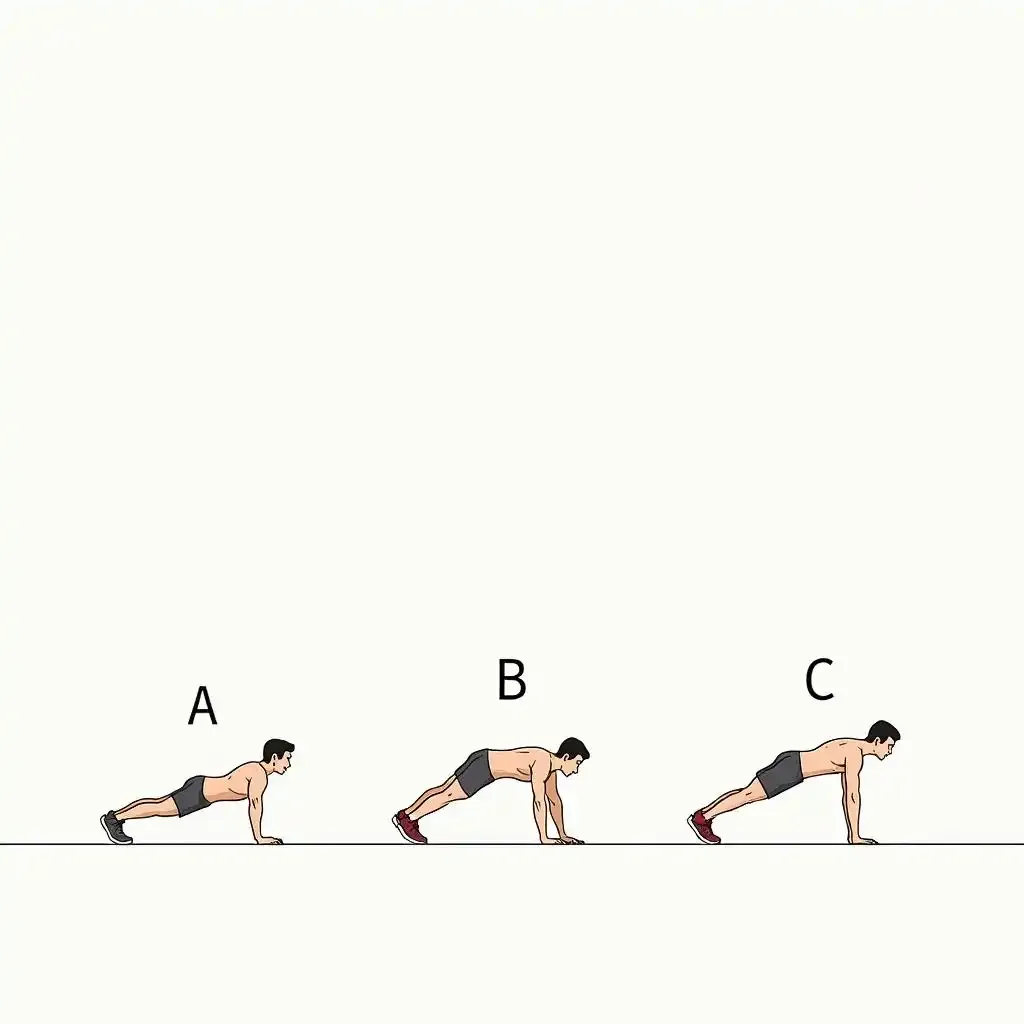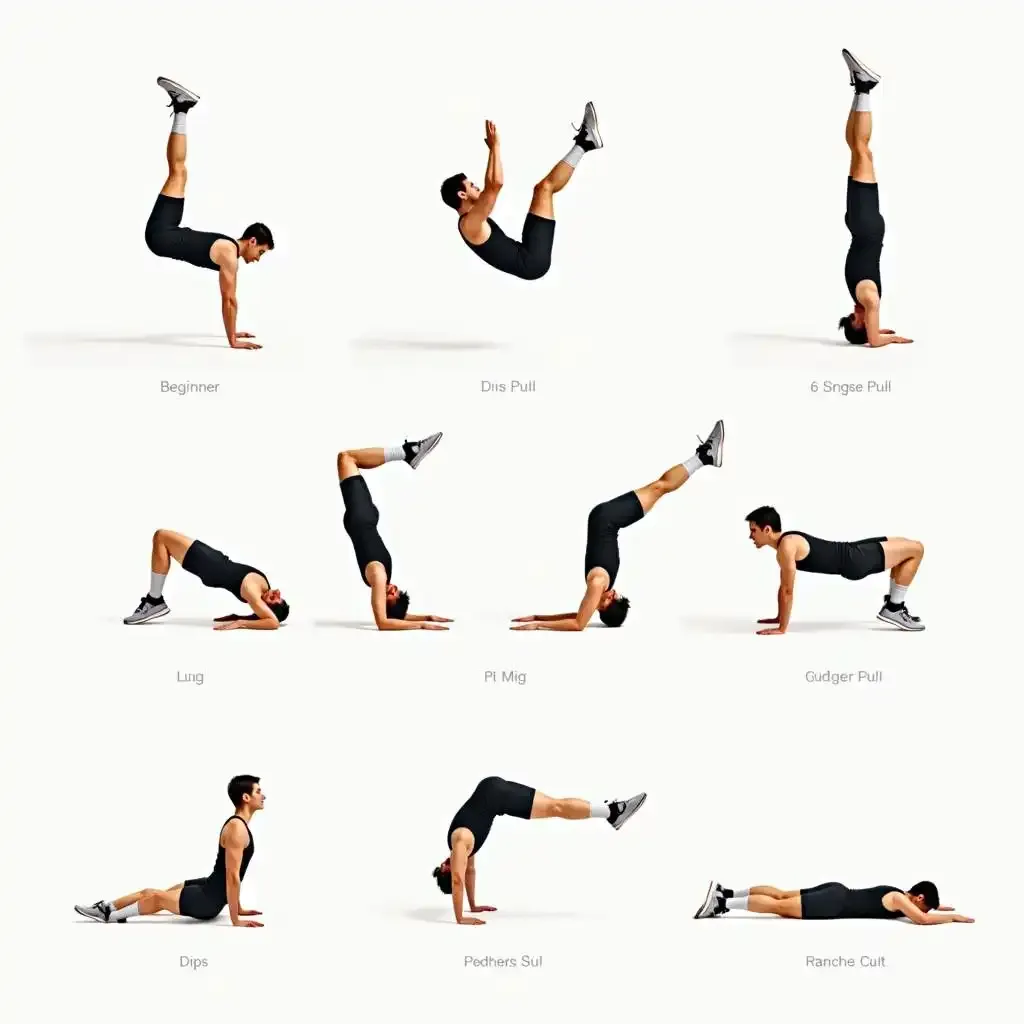Table of Contents
Ready to begin on a fitness exploration without expensive gym memberships or complicated equipment? Then welcome to the world of beginner calisthenics! Calisthenics, simply put, is using your own body weight to build strength, flexibility, and endurance. It’s a fantastic way to get fit, improve your overall health, and feel amazing. At kizworld, we believe that everyone can achieve their fitness goals, regardless of experience. This comprehensive guide will walk you through the essential exercises, create a safe and effective workout routine, and show you how to progress safely and effectively. Forget boring routines; we’ll make calisthenics fun and accessible. Get ready to challenge yourself, build strength, and uncover the amazing ability of your own body. Let's investigate into the exciting world of beginner calisthenics and transform your fitness trip!
Topic | Key Points |
|---|---|
Essential Exercises | Push-ups, squats, lunges, planks, crunches, and glute bridges. Focus on proper form. |
Workout Routine | Start with a full-body routine 2-3 times a week. Allow for rest days. Gradually increase reps and sets. |
Progression | As you get stronger, increase reps, sets, or difficulty (e.g., incline push-ups to regular push-ups). Consider adding more challenging variations. |
Safety | Listen to your body. Rest when needed. Focus on proper form to prevent injuries. Consider consulting a fitness professional. |
Beyond the Basics | Explore advanced calisthenics exercises, such as pull-ups, dips, and handstand push-ups, once you've built a strong foundation. |
Master Beginner Calisthenics: Your Ultimate Guide
Beginner Calisthenics: Your First Workout Routine
Crafting Your First Calisthenics Workout
Hey there, future calisthenics champion! Let's get you started with your very first workout. Don't worry, we're not throwing you into the deep end. We’ll begin with super-simple exercises. Think of it like learning to ride a bike – you start with training wheels (easy exercises), then slowly take them off as you get stronger. We'll focus on building a solid foundation. Remember, consistency is key! Even 15 minutes a day is better than nothing. Aim for three workouts a week, with rest days in between. Your muscles need time to recover and grow stronger. Think of your muscles like plants – they need water (rest) and sunshine (exercise) to grow big and strong. Need more tips for frequency? Check out our guide on how often to do calisthenics.
- Warm-up: 5 minutes of light cardio, like jumping jacks or high knees.
- Workout: Choose 3-4 exercises from the list below, performing 2 sets of 10-12 repetitions for each.
- Cool-down: 5 minutes of stretching.
Sample Workout and Exercise Variations
Here’s a sample routine to get you started. You can swap exercises around to keep things interesting! If you find something too easy, level up! For instance, if regular push-ups are a breeze, try incline push-ups, which are harder. If you want a more challenging workout routine, you can always check our calisthenics workout page. Remember, listening to your body is crucial. If something hurts, stop! Don't push yourself too hard, especially when you're just beginning. Building strength takes time. We’re not aiming for Olympic-level feats overnight! We're aiming for steady progress and a fun progression. This is about building a solid foundation, not breaking yourself.
Exercise | Description | Beginner Modification |
|---|---|---|
Squats | Stand with feet shoulder-width apart, lower your hips as if sitting in a chair. | Use a chair for support if needed. |
Push-ups | Start in a plank position, lower your chest to the floor, and push back up. | Do push-ups against a wall or on your knees. |
Plank | Hold a straight line from head to heels, engaging your core. | Start with shorter holds and gradually increase the time. |
Lunges | Step forward with one leg, bending both knees to 90 degrees. | Hold onto a chair for balance. |
Beginner Calisthenics: Your First Workout Routine
Beginner Calisthenics Exercises: Building a Strong Foundation
Okay, so you're ready to investigate into the amazing world of beginner calisthenics? Awesome! Think of your body as the ultimate workout machine – no fancy equipment needed! We're building a strong base here, like constructing a skyscraper. You wouldn't start with the penthouse, would you? You begin with a solid foundation. That's exactly what we're doing with these exercises. We'll start with the basics – moves that are easy to learn but still give you a great workout. Remember, consistency is your secret weapon! Even short sessions are better than skipping workouts altogether. I'm talking about building habits, not breaking yourself. Want to know more about how often you should be working out? Check out our guide on .
- Squats: Imagine sitting down in an invisible chair. It’s like magic!
- Push-ups: Start on your knees if needed – there's no shame in that! It's about progress, not perfection.
- Plank: Hold yourself like a superhero, strong and steady!
- Lunges: Step forward like a robot, bending both knees.
- Crunches: Tiny tummy movements, big results!
I remember when I first started, I was super clumsy. My squats looked more like a penguin waddle, and my push-ups were more like push-flops. But guess what? I kept going. I focused on my form and slowly but surely, I got stronger. It's all about the progression, not just the destination. And speaking of journeys, if you’re looking to take your fitness to the next level, you might consider our personal training course. It's a fantastic way to learn more about exercise techniques and build a strong foundation for your fitness progression.
Exercise | Sets | Reps |
|---|---|---|
Squats | 3 | 10-15 |
Push-ups | 3 | As many as you can! |
Plank | 3 | 30 seconds |
Lunges | 3 | 10-15 per leg |
Want to build even more strength? Don't just stick to these exercises. Mix and match! Try different variations. For instance, instead of regular push-ups, try incline push-ups (easier) or decline push-ups (harder). Feeling adventurous? Check out our killer for even more inspiration! And remember, it's okay to modify exercises to fit your fitness level. If you're feeling a little unsure, joining a class could be a game-changer. Check out our calisthenics classes - it’s a fantastic way to learn proper form and build confidence. You’ll be amazed at how quickly you progress when you have guidance and support!
One thing I learned early on: listen to your body! Pain is your body's way of saying, "Whoa, slow down, buddy!" Rest when you need to. Don’t compare yourself to others. Everyone starts somewhere. And honestly, even advanced calisthenics is just a series of basic exercises put together in different ways. Remember those basics? They're the building blocks of everything! You can build incredible strength with just your bodyweight, and our article on calisthenics effectiveness can help you learn more. Believe in yourself, and you'll see amazing results.
- Proper form is more important than the number of reps.
- Listen to your body and rest when needed.
- Consistency is key!
Mastering Beginner Calisthenics: Progression and Safety
Leveling Up: Progressing Safely
So, you've mastered the basics – congrats! Now it's time to think about making things a bit harder. It's like climbing a mountain; you don't just stay at base camp forever, right? The key is gradual progression. Don't try to run before you can walk (or, in this case, do a handstand push-up before you can do a regular push-up!). Start by adding more reps or sets to your exercises. If you're doing 10 push-ups, aim for 12 next time. If you're doing three sets, try four. Small steps lead to big achievements. Remember that feeling of accomplishment when you finally nailed that tenth push-up? That's the magic of consistent effort! It's like building a Lego castle; each brick adds to the strength and complexity of your structure. And if you need some extra guidance on how to build that strength, check out our strength training guide.
- Gradually increase reps (repetitions) and sets (groups of reps).
- Try harder variations of exercises (incline push-ups to regular push-ups).
- Add new exercises to your routine slowly.
Listening to Your Body: The Importance of Rest
This is super important: listen to your body! If something hurts, STOP. Don't push through pain; that's a recipe for injury. Think of your muscles like a sponge; you can't keep squeezing all the water out without letting it refill. Rest is just as important as exercise. Give yourself at least one rest day per week to let your muscles recover. And if you’re feeling really sore, take two! Your body will thank you for it. Remember, building strength is a marathon, not a sprint. A well-rested body is a stronger body. Feeling unsure about your workout frequency? Our guide on can help you figure out the perfect balance.
Day | Workout | Rest |
|---|---|---|
Monday | Calisthenics | Rest |
Tuesday | Calisthenics | Rest |
Wednesday | Rest | Rest |
Thursday | Calisthenics | Rest |
Friday | Rest | Rest |
Saturday | Rest | Rest |
Sunday | Rest | Rest |
Safety First: Proper Form and Technique
Proper form is like the secret sauce of calisthenics. It's what makes the difference between a fantastic workout and an ouch-inducing injury. Watch videos, read instructions carefully, and if you're unsure about anything, ask for help! There are tons of resources online, and even better, you can join a class! Our are a fantastic way to learn proper form from experienced instructors. They can help you avoid bad habits and ensure you're building strength safely and effectively. Remember, it's better to do fewer reps with perfect form than many reps with sloppy form. Think of it like building a house – you wouldn't want a wonky foundation, would you? A strong foundation is key to long-term success. If you're looking to boost your form and technique even more, you might want to check out our . It's a great way to learn from the pros and take your training to the next level!
Mastering Beginner Calisthenics: Progression and Safety
Beginner Calisthenics: Beyond the Basics
Adding Some Spice: Introducing New Moves
So you've conquered the basics? High five! Now it's time to kick things up a notch. Think of it like this: you've learned to walk, now it's time to run! We're going to introduce some more challenging exercises. Don't worry; we won't throw you into the deep end. We'll take it slow and steady. Remember, proper form is still king! A sloppy handstand push-up is just a recipe for a bruised ego (and maybe a sprained wrist). Start with easier variations of these advanced moves, gradually working your way up to the full versions. Think of it as building a staircase to the top of a mountain - you take it one step at a time. Want to know more about how you can build a solid foundation? Check out our !
- Pull-ups: These are like the ultimate upper-body challenge. Start with negative pull-ups (slowly lowering yourself down from the bar) and work your way up to full pull-ups.
- Dips: These work your triceps and chest. Use a bench or chair to start, gradually increasing the difficulty. This is where you'll see significant progress once you're comfortable.
- Handstand push-ups: These are advanced, but incredibly rewarding. Start with handstands against a wall and work your way up to freestanding handstand push-ups. It's a great way to build a whole new set of skills.
Listen to Your Body (Seriously!): Preventing Injuries
I can't stress this enough: listen to your body! Pain is your body's way of saying, "Hey, something's not right!" If something hurts, stop immediately. Don't push yourself too hard, especially when trying new exercises. It's better to take a break and recover than to end up injured. Remember, consistency is key, but so is rest. Think of your muscles as a finely tuned machine – you wouldn't run a car without oil, would you? Rest and recovery are vital parts of your fitness progression. Want to know more about how often you should be working out? Our guide on has all the answers.
Exercise | Potential Injury | Prevention |
|---|---|---|
Pull-ups | Shoulder injury | Use proper form and start with negatives. |
Dips | Wrist injury | Keep your wrists straight and engage your core. |
Handstand push-ups | Head injury | Practice against a wall first. |
Mixing it Up: Variety is the Spice of Life (and Fitness!)
Once you’ve got a handle on these more advanced moves, it’s time to get creative! Calisthenics isn't just about doing the same old exercises over and over. Think of it as a puzzle – you can combine different moves to create challenging and fun workouts. You can try different variations of exercises, add in some plyometrics (jumping exercises), or even incorporate some calisthenics-based cardio. If you want to explore a more structured approach, check out our page for some exciting ideas. One thing I love about calisthenics is its versatility. You can adapt it to your fitness level, your goals, and even your mood! It's like having a personalized fitness buffet – endless possibilities! Remember, it’s all about finding what works best for you and having fun while doing it. Want to see some more exercises that can change your body? check out our how calisthenics changes your body article. It has amazing results!
Beginner Calisthenics: Beyond the Basics
Final Thought
Beginning your calisthenics progression is a fantastic decision. Remember that consistency and proper form are key to seeing results and avoiding injuries. Start slowly, listen to your body, and celebrate your progress along the way. With dedication and the right approach, you’ll be amazed at what you can achieve. Keep exploring, keep challenging yourself, and enjoy the rewarding process of beginner calisthenics!